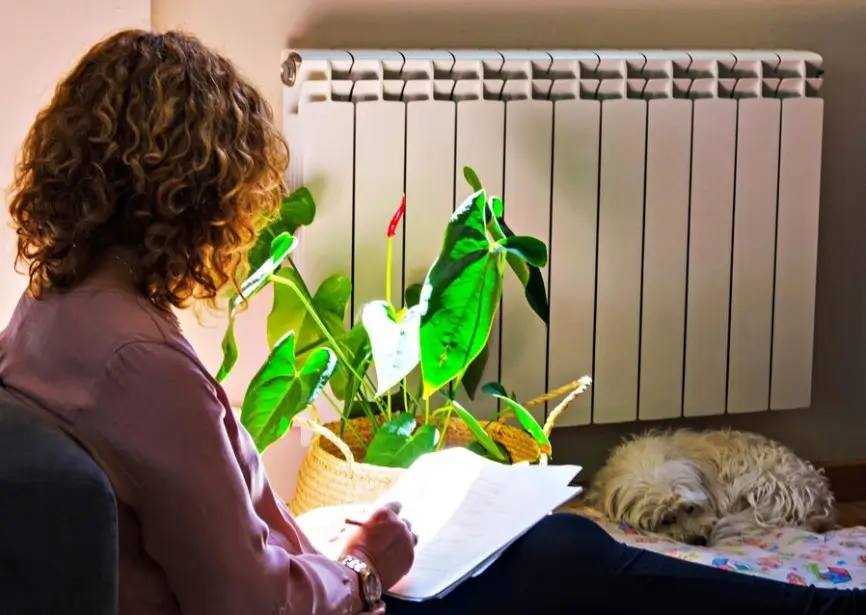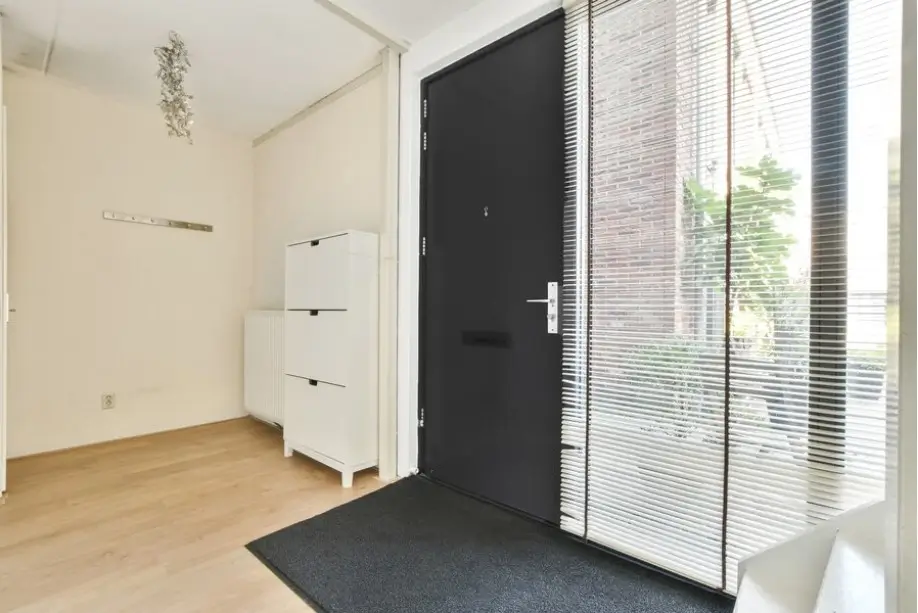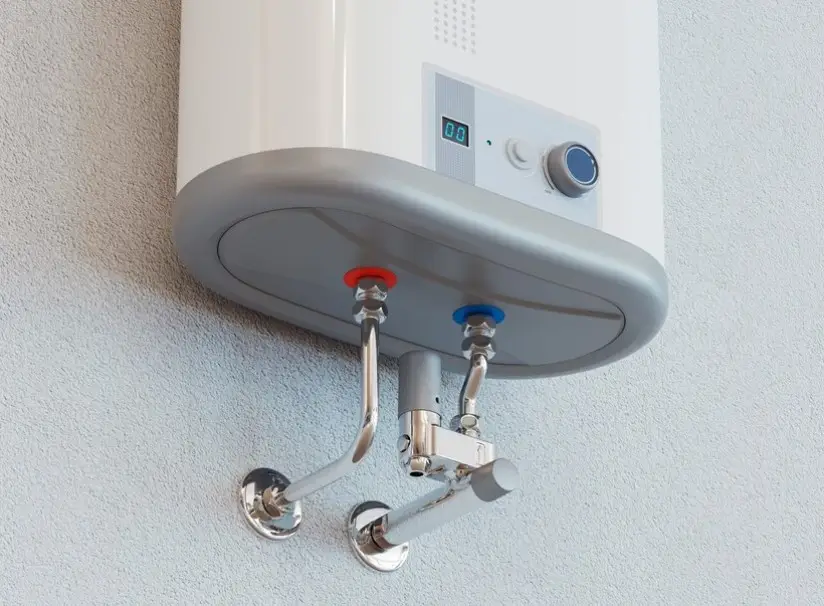In a home, low humidity can lead to discomfort and health problems. Respiratory issues and skin irritation can result from dry air.
For maximum comfort and wellbeing, you must keep the humidity level in your home balanced. We’ll look at the reasons behind low humidity in homes and offer workable fixes to deal with the problem. You will discover the possible health risks associated with low humidity as well as how it affects your house and possessions.
We’ll also go over practical strategies for raising indoor humidity levels, such as using humidifiers and home cures. You and your family can live in a more pleasant and healthy environment by implementing the advice in this article.
What Is Low Humidity
Lack of moisture in the air, or low humidity in a home, can cause dry skin, irritated respiratory tracts, and static electricity. In arid climes, maintaining appropriate indoor humidity levels is often necessary for comfort and health, necessitating the usage of humidifiers.
When there is little to no moisture in the air, it is said to have low humidity. It happens when the humidity falls below what is ideal for both comfort and health. This can occur indoors as well as outdoors, changing the ambiance in our houses.
It is imperative to comprehend the implications of low humidity in order to effectively handle any potential problems and devise suitable remedies.
Signs And Symptoms Of Low Humidity
- Dry skin: Low humidity can lead to dry skin, as the moisture in the air evaporates quickly, leaving our skin feeling dry and tight.
- Dry eyes: Insufficient humidity can cause eyes to become dry, itchy, and irritated. This may result in discomfort and reduced clarity of vision.
- Respiratory problems: Low humidity can cause or exacerbate respiratory issues, such as dry throat, coughing, and congestion. It can also trigger allergies and respiratory infections.
- Static electricity: When humidity is low, static electricity buildup becomes more prevalent. You may experience those annoying shocks when touching doorknobs or other objects.
- Chapped lips: Lips can become dry and chapped in low humidity conditions due to the lack of moisture in the air.
- Increased susceptibility to illnesses: Dry air can make your nasal passages more vulnerable to bacteria and viruses, potentially increasing the risk of catching colds, flu, or other respiratory infections.
Causes Of Low Humidity
- Winter weather: In colder months, humidity naturally decreases as the cooler air holds less moisture.
- Heating systems: Central heating and other heating methods in our homes can create dry indoor air by removing moisture.
- Arid climates: Certain regions naturally have low humidity due to geographic factors, such as desert areas or high-altitude regions.
- Poor ventilation: Insufficient airflow can trap moisture and lead to low humidity levels in the house.
Effects Of Low Humidity On The House
- Wood damage: Low humidity can cause wood to shrink, leading to cracks, splitting, and warping. This can affect wooden floors, furniture, and even structural elements.
- Static damage: Electronic devices and delicate equipment can be negatively impacted by static electricity caused by low humidity. Components may become damaged or malfunction.
- Peeling wallpaper or paint: Dry air can cause wallpaper and paint to peel or crack, compromising the aesthetics of your home.
- Increased dust: In an environment with low humidity, dust particles can remain airborne for longer periods. This can result in more visible dust accumulation on surfaces.
- Uncomfortable living environment: Low humidity can make the indoor air feel colder, causing discomfort and resulting in higher heating costs.
It’s essential to comprehend the implications and possible problems of low humidity in our houses if we want to keep our living spaces cozy and healthy. We may take the necessary steps to address low humidity and guarantee ideal humidity levels within our houses by being aware of its symptoms, causes, and effects.
Understanding Humidity
Low humidity in the home can cause respiratory irritation, dry skin, and even damage to wooden furniture. To maintain ideal humidity levels for a healthier living space, employ humidifiers, houseplants, and proper ventilation.
In order to keep an interior space cozy and healthy, humidity is essential. To help you better comprehend this crucial component, below is a breakdown:
- What is Humidity:
- Humidity refers to the amount of water vapor present in the air. It is typically measured in percentage and can significantly impact the overall comfort within your home. Proper humidity levels are essential for optimal living conditions.
- Ideal Humidity Levels:
- The ideal humidity level for most homes ranges between 30%-50%. This range ensures comfort, prevents mold growth, and protects wooden furniture from damage. Monitoring and controlling humidity levels are key to maintaining a healthy indoor environment.
- Effects of Low Humidity:
- Low humidity levels can lead to various issues such as dry skin, irritated sinuses, static electricity, and even damage to wooden floors and furniture. It is important to address low humidity to ensure the well-being of both occupants and the home itself.
- Measuring Humidity:
- You can measure humidity using a hygrometer, a simple device that provides accurate readings of moisture levels in the air. Keeping track of humidity levels allows you to take appropriate actions to maintain a healthy indoor environment.
It’s critical to comprehend the fundamentals of humidity and how it affects your house in order to design a safe and cozy living area. You may make sure that the interior climate is healthier and more comfortable by keeping an eye on and adjusting the humidity levels.
How Low Humidity Affects The Home
Low humidity in the house can cause respiratory problems, dry skin, and damage to wooden floors and furnishings. Additionally, it can affect general comfort by producing static electricity and making the air feel cooler. A humidifier installed in the home can aid in preserving a suitable humidity level.
- Dry Skin and Irritation: Low humidity levels can lead to dry, itchy skin and irritated nasal passages for the home’s occupants.
- Damage to Wood Furniture: Inadequate moisture in the air can cause wooden furniture to crack or shrink over time.
- Increased Static Electricity: Low humidity contributes to a build-up of static electricity within the home, leading to static shocks.
- Deterioration of Houseplants: Plants suffer as low humidity hampers their growth and can cause their leaves to dry out.
- Higher Energy Bills: Low humidity makes the air feel colder, prompting homeowners to increase heating, resulting in higher energy consumption.
Solutions For Low Humidity In House
- Use a Humidifier: Adding a humidifier to your home can help increase the moisture levels in the air.
- Avoid Overheating: Limit the use of excessive heat sources in the home to prevent further drying out of the air.
- Houseplants: Grouping houseplants together can create a microclimate with higher humidity levels.
- Proper Ventilation: Ensure adequate ventilation in your home to prevent stale, dry air.
- Regular Maintenance: Regularly check and maintain the humidity levels in your home to prevent issues caused by low humidity.
What Causes Low Humidity In A House
A home’s low humidity may be brought on by things like heating systems, arid weather, or inadequate ventilation. This may result in a number of concerns, such as respiratory disorders, dry skin, and harm to wooden furniture.
What Causes Low Humidity In A House:
Many things can contribute to low humidity in a home, which can result in dry and uncomfortable interior conditions. Knowing the causes will enable you to recognize the issue and take appropriate action. The following are some typical causes of low humidity in homes:
- Improper Ventilation: Insufficient ventilation can trap moisture indoors and decrease humidity levels. Inadequate airflow prevents the natural exchange of indoor and outdoor air, resulting in low humidity.
- Seasonal Changes: Low humidity is often more prominent during the winter months when the cold outdoor air holds less moisture. As people utilize heating systems indoors, the heated air tends to be drier, further reducing humidity levels.
- Excessive Air Conditioning: Air conditioning systems cool the air by removing moisture, which can result in decreased humidity levels indoors, especially if the AC unit is not well-maintained or oversized for the space.
- Sealing and Insulation: While proper sealing and insulation are crucial for energy efficiency, they can also inadvertently lead to low humidity. When a house is tightly sealed, it prevents air exchange and traps moisture, causing humidity levels to drop.
- Use of Heating Appliances: Some heating appliances, such as wood-burning stoves or portable space heaters, can dry out the air, lowering humidity levels in the process.
- Dry Climates: Living in a naturally arid region or an area with dry climate conditions can contribute to low humidity levels in your house. The lack of moisture in the air makes it challenging to maintain adequate humidity indoors.
It’s critical to recognize and comprehend the root causes of low humidity problems in your house. You may raise indoor humidity levels and make your home more pleasant for you and your family by putting specific solutions into practice.
Normal Humidity Level In Room
A comfortably humid space is necessary for good living. In the home, low humidity levels can lead to pain and health problems. Keeping your rooms’ humidity levels reasonable contributes to a comfortable and healthful atmosphere.
Understanding Normal Humidity Levels In A Room
It’s critical for your comfort and well-being that your living area maintain the right amount of humidity. Let’s examine what a room’s typical humidity level is and how it affects your general health.
What Is Considered Normal Humidity In A Room?
- Humidity levels between 30% and 50% are generally considered ideal for indoor environments. This range provides a comfortable atmosphere while preventing issues related to excess moisture or dryness.
- Levels below 30% indicate low humidity, which can lead to dry skin, irritated respiratory passages, and increased susceptibility to colds and infections. On the other hand, levels above 50% create a breeding ground for mold, mildew, and dust mites, triggering allergies and asthma symptoms.
- Monitoring the humidity in your home is essential for preventing potential health hazards and ensuring a pleasant living environment.
Knowing a room’s typical humidity range enables you to modify the environment in your house to keep it comfortable and healthy.
How To Increase Humidity
Try using a humidifier or putting bowls of water near heat sources to increase the humidity levels in a dry home. Water indoor plants on a regular basis, and think about getting a hygrometer to keep an eye on moisture levels. Close bathroom doors to prevent steam buildup and use a vaporizer to add more moisture.
Your home’s interior climate can be made more comfortable and healthful by raising the humidity level. The following are some practical ways to assist you raise the humidity:
- Use a Humidifier: Invest in a good-quality humidifier to add moisture to the air. Place the humidifier in the rooms where you spend the most time, such as the living room or bedroom. Run the humidifier as per the manufacturer’s instructions to maintain optimal humidity levels.
- Place Bowls of Water: Fill shallow bowls with water and place them near heat sources like radiators or vents. As the water evaporates, it will add moisture to the air.
- Take Longer Showers: Taking longer showers can introduce more moisture into the air. The steam from the hot water will increase the humidity levels in the bathroom and surrounding areas.
- Add Indoor Plants: Indoor plants not only enhance the aesthetics of your home but also release moisture through a process called transpiration. This will naturally increase the humidity in your house.
- Open Bathroom Doors: After taking a shower or bath, leave the bathroom door open to allow the steam to spread throughout your home, increasing the overall humidity.
You may successfully raise the humidity in your house and make it a more comfortable place to live by putting these techniques into practice.
Frequently Asked Questions Of Low Humidity In House
Why Is Low Humidity In House A Problem?
Low humidity can lead to respiratory problems, dry skin, itchy eyes, and damage to wooden furniture.
How Can I Increase Humidity Levels At Home?
Use a humidifier, hang wet towels, let laundry air dry indoors, or put water basins next to heat sources to raise the humidity level.
What Are The Effects Of Low Humidity On Health?
Reduced humidity can exacerbate allergies, lead to dry skin, aggravate respiratory issues, and make you more prone to colds and the flu.
What Impact Does Low Humidity Have On Furniture?
Low humidity can harm musical instruments and artifacts as well as cause wooden furniture to shrink, crack, or warp.
What Measures Can I Take To Prevent Low Humidity?
Seal windows and doors, fix leaks, add houseplants, and think about installing a whole-house humidifier to prevent low humidity.
Conclusion
It’s critical for your comfort and well-being that your home’s humidity levels be kept at the proper levels. Reduced humidity can harm your home’s furnishings and lead to respiratory issues, dry skin, and other issues. You may raise the humidity levels in your house and have a healthier living space by applying the advice in this blog post, which includes installing humidifiers, caulking air leaks, and keeping indoor plants.
Recall that keeping your home’s humidity at its ideal level is crucial for both your health and its longevity.







Leave a Reply